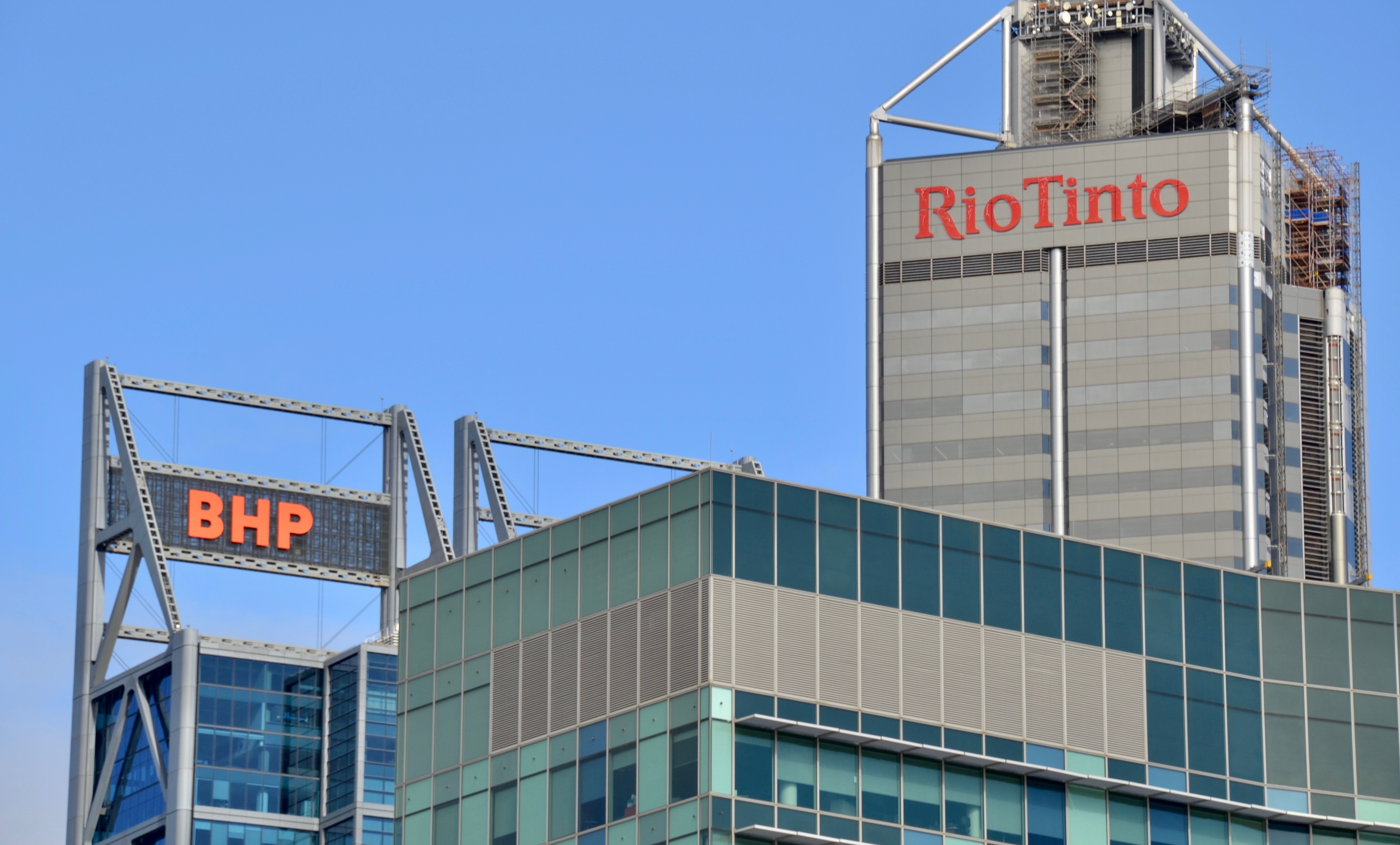BHP's chairman is buying shares on-market and Goldman Sachs thinks you should too
BHP's (ASX: BHP) six-month share price slump prompted chairman Ross McEwan to buy 10,000 shares last week at an average price of $34.15 per share, with the veteran deal maker sitting on a $20,000 profit in a matter of days as the stock added 2.8% to $36.42 on Monday.
Many of the 17 million Australians estimated to have a financial interest in BHP via direct share ownership or their superannuation funds will also wonder whether it's possible to make a quick profit on the miner, given its knocked-down share price.

Analysts at Goldman Sachs (NYSE: GS) reckon it's still a buy. Goldman's commodities team has lowered its iron and met coal price forecasts to adjust for softer Chinese demand, but still thinks the miner's strong balance sheet and low-cost operations will see it through a trade war slow down.
The investment bank's 12-month price target on BHP is $45.10 to offer potential 25% upside for today's investors, with a forecast for an additional 5% dividend yield.
Morgan Stanley's (NYSE: MS) local resources team also say BHP is a buy and has a sporty $48.50 price target on the shares.
In terms of valuation, Morgan Stanley says BHP trades at 10.9 times consensus estimates for earnings per share of US$2.07 ($3.30) in financial 2025, versus its five-year price-to-earnings (PE) average of 12.5 times.
Aside from valuation, many investors will own BHP for its dividends and perceived defensiveness. In particular, it's attractive to the (roughly) one-in-two self-managed super funds, that are looking to stuff their retirement portfolios with long-term earners that will pay them reliable cash income.
Analyst consensus forecasts currently call for BHP to pay US$1.06 ($1.69) in dividends in financial 2025, and US$1.13 ($1.79) in financial 2026, to place it on a yield of 4.7% based on forecasts for financial 2025.
However, it's worth remembering these forecasts are based on estimates for notoriously volatile commodity prices. So they could vary widely from what's delivered, especially in the context of an unpredictable trade war between President Trump's US and China.
Rio Tinto as the copper king?
Interestingly, Goldman prefers Rio Tinto (ASX: RIO) partly due to its superior medium-term development outlook for copper production, and expects BHP's rival to deliver investors better capital growth and dividends over the five years to 2030.
Goldman's assumption is based on its forecast for Rio to deliver free cashflow (FCF) yields of 7% to 8%, versus BHP at 4% out to 2030.
In other words, the FCF yield metric suggests Rio could deliver a theoretical $8 billion of profit per year versus a $100 billion market cap, whereas BHP could only deliver $4 billion of profit per year versus a $100 billion market cap.
All else being equal, this suggests Rio will deliver more profit per share than BHP to mean it's better value, but the catch is that Goldman's forecasts are based partly on volatile copper prices and hard-to-predict production growth profiles for both miners.
Still, Goldman suggests Rio shares have 28% upside on a forecast dividend yield of 5% over the next 12 months, assuming its 12-month price target of $141.90 is on the money.
Schroders head of Australian Equities, Martin Conlon, also believes the downturn in BHP and Rio's valuations is likely short term in nature, as the demand for commodities, key to the energy transition and China's growth, is not going away over the long term.
"Given businesses such as BHP and Rio Tinto have proven as durable as any in the Australian investment universe, significant repricing may present an opportunity here, as cyclicals and trade exposed businesses are being disproportionately impacted by flows in the short-term," Conlon told clients on April 8.
Notably, McEwan wasn't the only BHP insider buying shares last week. On April 7, director Gary Goldberg bought around $60,000 worth of shares presumably because he also believes the stock's good value.
In share markets, it's a fair rule of thumb that directors and company employees sell shares for many reasons, but only ever buy on-market for one reason - because they believe the stock is good value and likely to appreciate. After all, nobody ever bought shares on the expectation they would fall.
Elsewhere today, broker UBS hiked its gold price forecast nearly 21% to $3500 an ounce in 2026. As a result UBS also lifted its valuation on a slew of ASX-listed gold miners including Newmont (ASX: NEM), Northern Star (ASX: NST) and De Grey Mining (ASX: DEG).

5 topics
5 stocks mentioned
